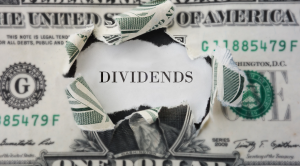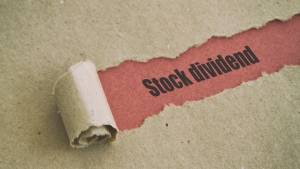Are you looking for ways to maximize your investment returns? If so, then yield dividend stocks might be just what you need. In this blog, we will dive deep into the world of yield dividend stocks and uncover their potential benefits and risks. We will discuss how to find the best-yield dividend stocks for your portfolio and provide insights on analyzing a company’s financials before investing. Additionally, we will explore the different types and categories of yield dividend stocks and shed light on their tax implications. If you’re ready to take your investment strategy to the next level, keep reading to discover the secrets of finding the best yield dividend stocks.
What are Yield Dividend Stocks?

Yield Dividend Stocks are shares of companies that regularly pay out dividends to investors, providing them with a steady income. These stocks are usually associated with financially stable companies with a proven consistent dividend payout history. Investors can identify Yield Dividend Stocks by researching companies with high dividend yields and a track record of increasing dividends over time. However, when selecting these stocks, it’s essential to consider factors like the company’s financial health, dividend payout ratio, and potential for future growth.
How to Find the Best Yield Dividend Stocks?
1. Define your investment goals
Determine your investment objectives, risk tolerance, and desired yield. This will help you narrow your search and find stocks that align with your needs.
2. Research dividend-paying companies
Look for companies with a history of paying consistent dividends. Review their financial statements, earnings reports, and dividend payment history. Pay attention to factors such as dividend growth rate, payout ratio, and overall financial health.
3. Assess dividend sustainability
Evaluate the company’s ability to sustain its dividend payments over the long term. Consider factors such as the company’s cash flow, profitability, debt levels, and industry trends. Stable earnings and a healthy balance sheet support a sustainable dividend.
4. Analyze dividend yield
The dividend yield is calculated by dividing the annual dividend payment by the stock price. However, it’s important to note that a high yield may not always indicate a good investment. Sometimes, high yields are a result of declining stock prices, which could be a red flag. Look for a balance between a reasonable yield and a stable or growing stock price.
5. Consider dividend growth
Dividend growth is an important factor for long-term investors. Look for companies that have a track record of consistently increasing their dividend payments over time. A history of dividend growth indicates a company’s commitment to returning value to shareholders.
6. Evaluate the company’s fundamentals
Beyond dividends, assess the company’s overall financial health and prospects. Analyze factors such as revenue growth, earnings growth, competitive advantage, market share, and management quality. A strong company with a competitive position is more likely to sustain and grow its dividends.
7. Diversify your portfolio
Consider building a diversified portfolio of dividend stocks across various sectors and industries. This can help mitigate risks associated with a particular company or sector.
8. Monitor news and market trends
Stay updated with news and events that can impact the dividend-paying stocks you own or are considering. Keep an eye on earnings announcements, company news, industry trends, and macroeconomic factors that could affect the overall market.
9. Seek professional advice if needed
If you’re uncertain about analyzing stocks or lack the time, consider consulting a financial advisor or using reputable investment research platforms to gain insights and recommendations.
Benefits of Investing in Yield Dividend Stocks

When it comes to dividend stocks, many investors focus on yield. And for a good reason: A higher yield usually means a higher income stream.
But yield isn’t the only thing that matters. Other important factors are to consider, such as the company’s dividend history, payout ratio, and financial health.
In general, though, dividend stocks can offer several benefits, including:
- A regular income stream: Dividend stocks can provide a reliable source of income, which can be helpful in retirement or during periods of market volatility.
- Potential for capital gains: If a company’s share price increases, you could see capital gains as well as dividends. That said, stock prices can also go down, so there’s risk involved.
- Diversification: Adding dividend stocks to your portfolio can help diversify your holdings and reduce overall risk.
- Reduced portfolio volatility: Studies have shown that portfolios with dividend stocks tend to be less volatile than those without them. This is because dividends can act as a cushion during tough times for the overall market.
Risks of Investing in Yield Dividend Stocks

When it comes to yield dividend stocks, there are a few risks investors should be aware of. First, the dividend yield is simply the percentage of the current stock price that is paid out in dividends. This number can fluctuate greatly depending on the stock’s price, and it’s important to remember that past yields are not indicative of future ones.
Second, dividend stocks tend to be more volatile than their non-dividend counterparts. This means that they may be more prone to sudden drops in price, which could lead to losses for investors.
Many dividend stocks are concentrated in specific sectors, such as financials and energy. This sector concentration can increase the overall riskiness of a portfolio if these sectors underperform.
While there are some risks to consider before investing in yield dividend stocks, there can also be potential rewards. Dividend stocks tend to offer stability and income during periods of market turbulence, and they can provide good diversification for a investment portfolio. Ultimately, it’s important to carefully weigh the risks and rewards before making any investment decisions.
Types and Categories of Yield Dividend Stocks

There are many different types of stocks that offer a dividend, and each has its own benefits and drawbacks. Here are some of the most common types of yield dividend stocks:
- Growth stocks: These stocks offer shareholders the potential for capital appreciation and a dividend. However, they tend to be more volatile than other types of stocks, so they may not be suitable for risk-averse investors.
- Value stocks: These stocks typically trade at a discount to their intrinsic value and offer a higher dividend yield than growth stocks. They may be less volatile than growth stocks but still have some risk.
- Dividend aristocrats: These are companies that have increased their dividend payout for 25 consecutive years or more. They tend to be large, well-established businesses with strong fundamentals, making them a relatively safe investment. However, they may not offer as much upside potential as other types of stocks.
- High-yield dividend stocks: As the name suggests, these stocks offer a higher dividend yield than most other stocks. They can be found in both the growth and value categories but tend to be more risky than aristocratic stocks.
Tax Implications of Investing in Yield Dividend Stocks

Investing in yield dividend stocks can have tax implications. The dividends received from these stocks are generally subject to taxes, either as ordinary income or qualified dividends. The tax rate depends on your income bracket and the holding period of the stocks. It’s important to consult with a tax professional for specific advice tailored to your situation.
Investing in yield dividend stocks may subject you to taxes on the dividends received. The tax rate is based on your income bracket and holding period. Consult a tax professional for personalized advice. Investing in yield dividend stocks can be a smart way to generate income from your investments. However, it’s important to understand the tax implications associated with these types of investments.
When you receive dividends from yield dividend stocks, they are generally subject to taxes. The tax rate on these dividends can vary depending on your income bracket and the holding period of the stocks.
If you fall into a higher income bracket, you may be subject to a higher dividend tax rate. On the other hand, if your income falls within certain limits and you meet specific holding period requirements, you may qualify for lower tax rates on qualified dividends.
It’s important to note that ordinary dividends are taxed at your ordinary income tax rate, which can be higher than the tax rate for qualified dividends. Qualified dividends, on the other hand, are eligible for lower tax rates that are typically more favourable.
The holding period of the stocks also plays a role in determining the tax rate. In order to qualify for the lower tax rates on qualified dividends, you generally need to hold the stock for a certain period of time. This holding period requirement is usually met by holding the stock for at least 60 days within a 121-day period Investing in yield dividend stocks can result in taxes on the dividends received. The tax rate depends on your income bracket and holding period. Seek guidance from a tax professional to get personalized advice.
Conclusion
Finding the best-yield dividend stocks can be profitable for investors looking to generate passive income. By conducting thorough research, analyzing financial metrics, and considering the company’s track record, investors can identify stocks with attractive dividend yields and a history of consistent payouts. It is also important to diversify your portfolio and regularly review your investments to ensure they continue to meet your financial goals. Remember, investing in dividend stocks requires patience and a long-term perspective. If you’re ready to start building a portfolio of high-yield dividend stocks, begin your search today and watch your investment grow over time.










